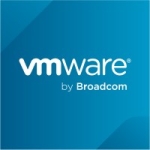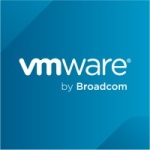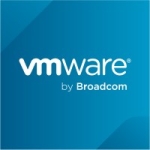What is our primary use case?
I primarily used the solution for hypothetical cases. I used the solution to look at the 2019 active directory environment, some remote SQL storage, and storage access from on-premises to the cloud.
What is most valuable?
There's a feature for automated tasks. As an administrator, handling administrative-type tasks, it's quite useful. For example, I was spending lots of money when I would spin things up. I'd spin up a SQL server. I'd spin up different types of things. They cost a lot of money. I would get distracted, walk away, and go to bed. I'd get up in the morning, and I'd see I'd have a bill. Therefore, I spun up an automated task and wrote a PowerShell script, put it in an automated task, and it would run at seven o'clock every night, and delete all my resources. It saved me money.
You can build an environment in minutes. It's very good in terms of being an infrastructure as a service, and I found that really fascinating.
All the devices they have up there that replace existing devices in the real world like load balancers or F5 are helpful. I'm not sure how they relate or how they form compared to F5, or the firewalls compare to the ones that are in data centers, however, they looked all right to me.
The solution is mostly stable.
The product scales extremely well.
What needs improvement?
It's a bit of a mystery how the storage is going to perform. For example, when you've got a storage device like Hitachi or NetApp, you can run reports on that storage and you can do all this good stuff. I'm not sure if that's the case with Azure. A lot of the stuff is kind of proprietary, at the moment.
The cost is quite high.
You can't control the data as much as you would like to. When it's theirs, it's theirs. With Hitachi, Hitachi has its own policies. You can move data around based on how much it's used into lower-cost discs and whatnot. You might be able to do that with Azure. However, I can't verify that.
The initial setup is complex.
They need to make storage easy and offer more interconnectivity between solutions.
For how long have I used the solution?
I've used the solution for about a year or so. Maybe a year and a half at most. It hasn't been that long.
What do I think about the stability of the solution?
In terms of stability, I've seen it go down twice now. They've had two problems with the active directory. That said, I would describe it as stable. They have different sites, regions, and whatnot, where you can move your data around in case you lose a data center or you lose a region. However, if you lose the active directory, that can take everything down.
It's not any more stable than an enterprise environment, to be honest. Maybe a little bit, however, if you lose a network connection to it, that's not stable.
I worked in a bank, a huge 50,000 employee enterprise. I saw their infrastructure go up and down about the same, once or twice a year. That's about the same as Azure, therefore, it's not anything different than an enterprise. You can make an enterprise resilient if you have lots of domain controllers and you do lots of redundant paths.
What do I think about the scalability of the solution?
The solution is very scalable. It's one of its great selling points. If a company needs to scale, it can do so with ease.
How are customer service and technical support?
I've never been in touch with technical support. I can't speak to how helpful or responsive they are.
How was the initial setup?
For a layperson or someone who is not trained, it wasn't an easy initial setup. It had some complexities.
I've personally gotten used to the process. The deployment, for example, wouldn't take that long now. While in the beginning, a deployment might take a month, now that I am more comfortable with the solution and more familiar, I can likely do it in a few days.
That said, it depends on a company's plans and its own unique environment and complexities. It can vary. Most people seem to struggle with all of the connections they had before.
The number of people you need to deploy or maintain the solution really depends on the size of the environment. After implementation, you could probably scale back your employees from 10% to 50% with Azure.
What about the implementation team?
I can handle an implementation myself. I'm getting better and faster at it.
What's my experience with pricing, setup cost, and licensing?
I've found the cost to be a bit high. You also get dinged for extra things along the way.
The charges are also unpredictable. Even if you think something is a relatively static item, they'll charge you for it and it will change your expectation of the cost.
Which other solutions did I evaluate?
I've looked at other solutions, such as Hitachi and Netapp.
The biggest struggle a person would have these days, as an architect, is to determine what the cost-benefit of going to Azure would be rather than going to a storage device such as a Hitachi or a NetApp. Which has better value? What's going to be better in the next couple of years? You can really get screwed if you're going to be pulling data down from the cloud. If you pull a lot of data from the cloud, it's going to cost you. You don't get charged for putting it up. You get charged for pulling it down.
What other advice do I have?
I basically used the solution to study.
I used a few different deployment models. I made an on-prem environment, Hyper-V environment, on my laptop and I connected it to the cloud.
I'd advise those considering the solution to not put all of their eggs in one basket. By that, I mean, it's a good idea to go hybrid and not full cloud. Going hybrid covers that network loss that you could suffer if you lose the network. If you lost a data center or a region, you could still have your on-prem server running an image of the cloud onsite.
I'd give the solution an eight out of ten. I haven't had a chance to study AWS or Google, however, I like this solution very much.
Which deployment model are you using for this solution?
On-premises
Disclosure: My company does not have a business relationship with this vendor other than being a customer.


















Have you used Azure Purview for Data Governance, Data Lineage and as Data Catalog ?